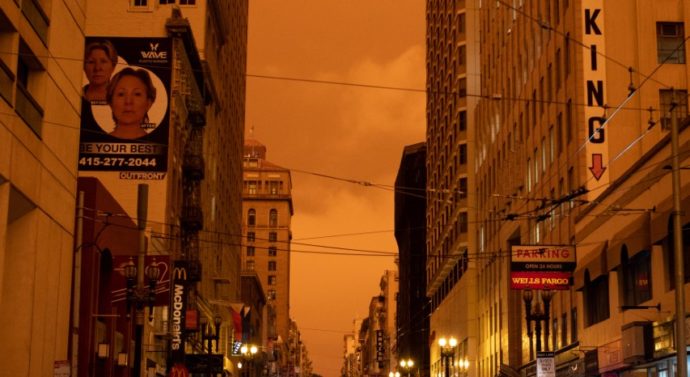
West Coast wildfires
News September 25, 2020, Comments Off 71Dozens of wildfires have been burning nonstop across the west coast. So far, the fires have killed more than thirty people and forced tens of thousands from their homes. It is believed that a lightning strike caused the initial flames and season long warm temperatures and dry conditions have made it possible for further flames to ignite. Scientists believe that climate change can be linked to the severity of the fires. These fires are the worst the region has seen in 18 years.
The impact of the wildfires could spread to the east. Strong winds have blown the smoke from the fires across the country. Smoke has been seen as far east as New York city—although the smoke was not strong enough to effect the quality of air in the city. However, the smoke did cast a haze over the city that might stick around for a while.
The wildfires have also impacted the stability of the wildlife along the west coast. The fires have burned more than 3 million acres but it is still unclear at this time how that will impact the area’s wildlife. National Geographic predicted in their article “What do wild animals do in Wildfires” that many different species might suffer stating “It is unclear how many animals have died—such data is not tracked consistently across regions—but it is clear that even species that have evolved to thrive in habitats that burn regularly are facing new challenges.”
The wildfires are predicted to get worse before they get better. The National Interagency Fire Center releases monthly outlooks in their September update they said “following a brief pause in activity in California and a cessation of seasonal activity elsewhere across the West, large fire potential is expected to increase in October and November in wind prone areas across the sate. The expectation of drier than average conditions and a higher probability of more frequent Foehn Wind events suggest that signifiant large fire potential will be elevated until winter sets in during December.”
Cal Fire took to Instagram to remind citizens that the danger isn’t always over once the fires have been put out, stating “Evaluate the potential for debris flows and flooding following heavy rainfall in high risk areas that have experienced intense wildfire. The findings help minimize post-fire life and safety risk to values at-risk, such as homes, highways and recreational areas.”
Even as the fires are put out there will be long terms impacts following the wildfires. Land has been lost. Homes have been lost. Wildlife will suffer. There even seems to be the potential of the physical danger lasting well beyond the end to the fires.
Written by Marissa Mayfield